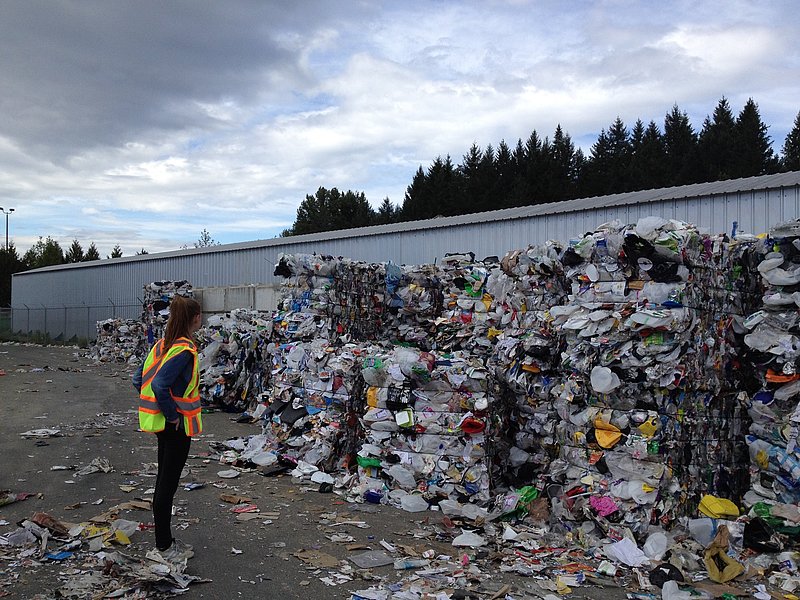A Breakthrough in Plastic Recycling
Recycling is great, but unfortunately global recycling rates are still too low. How can we achieve more efficient recycling and what are the challenges facing the recycling industry? A new publication gives us hope for a simpler and more efficient recycling process.
Last week, a study, which was led by the U.S. Department of Energy’s National Renewable Energy Laboratory (NREL) was published in the journal Science. Scientists of the BOTTLE Consortium (Bio-Optimized Technologies to keep Thermoplastics out of Landfills and the Environment) have taken a key step towards expanding the range of plastics that can be recycled! This breakthrough is important because plastic waste is a massive problem globally and recycling often fails because the plastics can then only be used in the form of recycled products with lower quality. For example, as filling material.
Additionally, recycling is easiest when it comes to already sorted, pure plastic waste. One of the biggest challenges in recycling plastic is separating all the varieties that are found in waste streams. Allison Werner, one of the authors of the publication, explains: “The process we developed could potentially enable upcycling of mixed plastics waste, which today is found both as co-mingled materials, like a PET bottle and a Styrofoam cup, as well as multi-layer films, like a chip bag. Co-mingled products have to be sorted before recycling, which can be time intensive and expensive. Multi-layer films are extremely difficult to separate into single polymer streams, so these materials are generally not considered recyclable today. Thus, the process we demonstrate here could be applied to address plastic streams that are currently not recycled at all, or only a very small rates.“
The collaboration led by Gregg Beckham, Senior Research Fellow and Group Leader at NREL, combined chemical and biological processes in a proof of concept to enhance the value of mixed plastic waste. Beckham and the research team have found a way to recycle three of the most important mass-produced plastics simultaneously without prior separation:
Polystyrene (PS) which is used in rigid foam sheets and disposable coffee cups,
Polyethylene terephthalate (PET), which is used to make PET bottles and polyester clothing, and
High-density Polyethylene (HDPE), the world's most widely used plastic for films and packaging.
Since conventional recycling methods only work very well if the waste is already sorted and no other types of plastic are added as impurities this two-stage process combining chemistry and biotechnology is a huge scientific breakthrough. But how does the recycling process work?
- Chemical oxidation: The different types of plastic are chemically decomposed to a mixture of intermediates with the help of oxygen and metal catalysts. This produces dozens of degradation products, mainly organic acids.
- Biological funneling: All the substances go into a bioreactor to upcycle the mixture of intermediates to a single, valuable product. The bioreactor is home to genetically modified soil bacteria which further utilize the acids and produce useful chemicals from them.
In addition, the degradation products contain a lot of oxygen after chemical decomposition which makes them more biodegradable. This also applies to the oxygen-rich fragments of polyethylene, polystyrene, and PET. Therefore, the bacteria in the bioreactor digest them better. The microbes end up converting an extremely large number of different plastic degradation products into very specific chemicals. The researchers achieved yields of almost 60% – that’s a lot for the recycling of mixed plastic waste!
So far, this is only done on a laboratory scale, but it shows that the concept works. It can now be further developed and implemented in larger plants. Although this will certainly take several years, the outlook for the next few years is exciting as well as promising. “The deconstruction step uses chemistry that is currently used at the million-ton scale industrially in the Amoco process, so we’re optimistic that this step is scalable! However, this work is only a proof-of-concept, and additional research and development should be done to further improve and understand this process, including by adding additional polymers to the process, reactor engineering, technoeconomic analyses, and lifecycle assessments. We’re engaged in this work now, but it’s too soon to comment on the challenges for scale-up as this is not our current focus.“, adds Allison Werner. The team is also working on including waste from polypropylene and PVC. Then you would have a process for the simultaneous recycling of even five bulk plastics!
Our MIX-UP coordinator Prof. Lars Blank comments: “It is exciting to see that the many topics MIX-UP is working on reach the highest journals, from plastic degradation to monomer conversion and product synthesis. Contributing to overcome the 'plastic waste to bioplastic value' challenge is highly rewarding."


